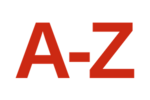Generating Printer Ready Artwork
Promotional gifts with an imprint (message and logo) on them are called ‘branded’ promotional items. Origination is a process that takes your artwork and creates the necessary printing plates, screens and foils required to place your imprint onto the goods. The process starts with the artwork you send us.
This guide covers some of the typical artwork problems seen within the promo industry:
- Image Resolution
- Font Selection and Text Sizes
- Vector or Raster File Types
- Colour Specification
- Artwork Proof Delays
The quality of the imprint is down to good artwork. We have to reject some of the artwork files sent to us first time round and have written this guide to try to explain why.
Redbows has its own Design Studio Solutions to help with artwork amendment and even complete generation from rough drawings to copy with compliment slips. Clients are asked to download and complete the Redbows Artwork Brief should they require any of our artwork services.
Image Resolution
We can only accept logos and images whose resolution is 300dpi. This means photographic quality. If the resolution is too low the printed image will appear grainy with rough edges and colours can bleed. Most images that appear clear on a web site for example are actually 72 pixels per inch to give a fast download. At 72 pixels per inch an image can appear clear on your PC screen and download very quickly. However if enlarged and/or printed out the quality is evident – the edges will be pixelated and definition lost. You can check the size of your image using software like Adobe Photoshop (Click >Image>Resize).
Font Selection and Text Sizes
The best fonts to use are common fonts that are easily readable. The most common fonts we see are traditional Arial or Times Roman. We have printed gifts with a wide range of fonts and simply advise clients to make sure that their imprint can be easily read. One of the best ways to do this is to make the print as large as the design allows. Where the text size is too small, designs can suffer from ‘bleed through’ when printed. Here the ink colour runs into an area it should not because the area is too small to sustain a periphery around it.
Vector and Raster File Types
Most people now have access to Adobe PhotoShop. They open a file, place their logo (which is probably a .JPEG file) and add some text. They then save their work as a .EPS file and send it over to us. We then reject it because in an Adobe PhotoShop file (known as a Raster file) the final saved image is made up of pixels and not individuals elements that can be edited later. Our printers work with Adobe Illustrator .AI and .EPS files of the type known as a Vector file.
Another common problem occurs when people cut a logo from a Word document or website into another Word document and send it to us with text for use as artwork. We can definitely say that any ‘artwork’ generated in a word processor will not be good enough for a printer to use.
Colour Specification
Printing process pricing is defined by the number of colours used in your artwork. It may be a single colour print, two, three or four colour print. Four colour printing is also known as full colour printing. Every ink colour printed is defined in parts and percentages by a formula from the four primary colours – Cyan, Magenta, Yellow and Black.
To accurately replicate your artwork in print we need the Pantone references for the individual spot colour(s) used in your design. Pantone colours use a unique reference such as Pantone 2707 U to indicate the colour and finish. In this case a light sky blue, uncoated. Pantone colours are found in a Pantone reference guide and cover almost every colour available.
An alternative is a CMYK reference. CMYK stands for the four primary print colours that make up a full colour litho printing process print: C-Cyan, M-Magenta, Y-Yellow and K-Black. For example C44%, M100%, Y30%, K9% tells a a printer to produce a specific lilac purple. We can check the CMYK reference for each colour used in your artwork in Adobe Illustrator or Photoshop using the Eyedropper tool.
RGB stands for Red, Green and Blue. This is the set of colours used to generate images on a computer monitor. RGB colour references are our last choice when defining colours. The reason is that when printers convert them to a CMYK reference there can be a colour shift and so the final colour(s) printed may be different to the colour(s) seen in the artwork. For the CMYK specific lilac purple above the RGB reference would be R144%, G32%, B104%, #902068. We can check the RGB reference for each colour used in your artwork in Adobe Illustrator using the Eyedropper tool.
Artwork Proofs
Except for our express services, all gifts are subject to a signed off Hardcopy Artwork Proof. This is a final chance to catch any errors before we print. Please make sure you always treble check the proof and if in doubt ask questions because once printed it is extremely rare that errors and corrections can be made. Artwork proofs are generally sent by fax or email. Once your proof is signed off we immediately instruct our productions teams to start their part of the process, sometimes within minutes your goods are in print.
Virtual Visuals
The Redbows Design Studio can quickly generate a virtual visual showing you how your artwork will look on your chosen promotional item.
All you need to do is send us your a file of your logo in a suitable format – preferably a JPEG, GIF or PNG file and we can then proceed to provide a proof for you. We will then email you back an electronic proof in a pdf format to view. Please note, that the quality of what we provide is going to be very much governed by the quality of the file that you send us. If it is of a low-resolution your logo may become pixelated when applied to a product image. Please email your artwork to design[@]redbows.co.uk or complete our enquiry form and upload your artwork.












